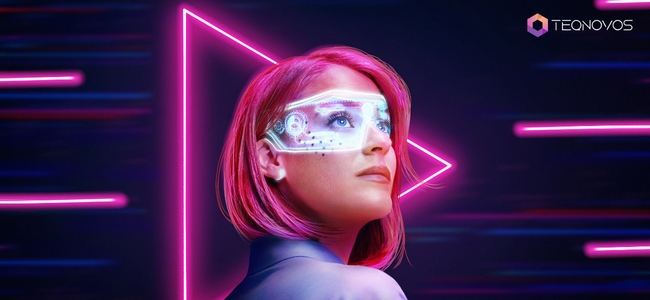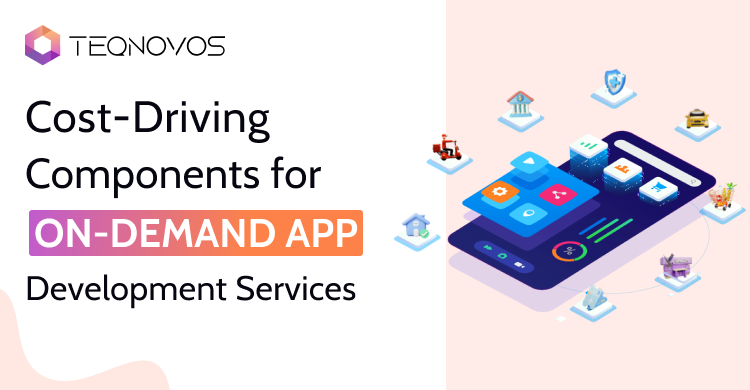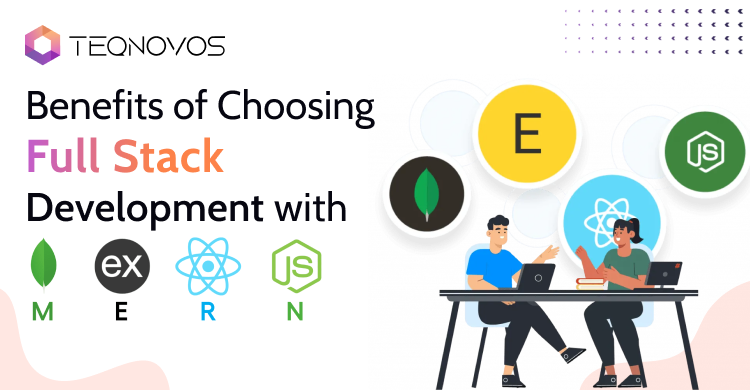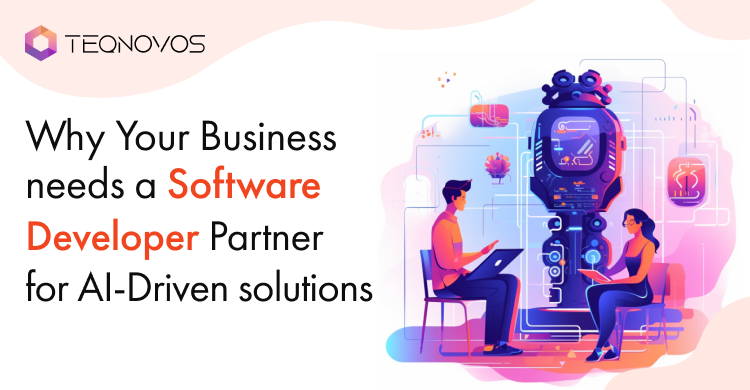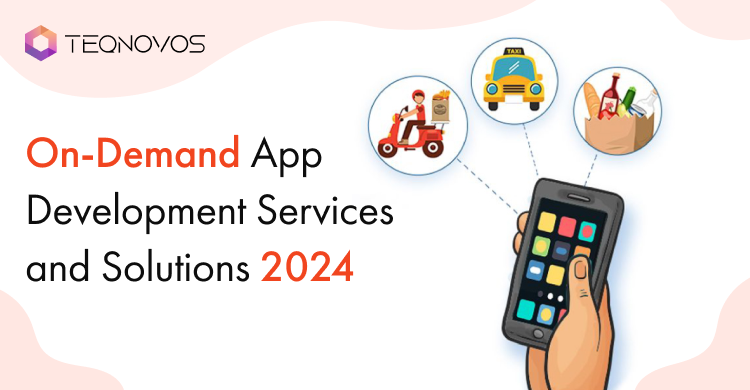How Web 3.0 Can Benefit Your Business?
Web 3.0 is an advanced version of the web that we are using today. It focuses on making the web decentralized and more secure. But how can it benefit businesses? Let’s find out.
The popularity of Web 3.0 or Web3 is on the rise as it has the potential to revolutionize the way we interact with the web. Also, the adoption of Web 3.0 is going to change the way businesses operate. Thus, businesses need to embrace Web 3.0 to reap maximum benefits.
If you are a business owner or a C-level executive looking to leverage Web 3.0 for your organization, you need to get familiar with its core concept.
In this article, we will shed light on various aspects of Web 3.0, including the advantages that it offers to businesses.
So without further ado, let’s get started!
Evolution of Web: From 1.0 to 3.0
Many of us aren’t aware of the changes that the web has undergone since its inception. Tim Berners-Lee, while working at CERN, invented the web in 1989 as a document management system that enables document sharing over the internet.
In 1991, the web was made available outside CERN to the general public. Today, we know the first ever version of the web as Web 1.0.
Till the early 2000s, several advancements were made to Web 1.0, which eventually led to the release of a new and more enhanced version of the web, known as Web 2.0 that we majorly use today. This version of the web became more interactive and people-centric.
Finally, the advent of next-generation technologies, including blockchain, artificial intelligence, machine learning, augmented reality, and the internet of things (IoT) helped to conceptualize Web 3.0. Unlike Web 2.0, which is fully centralized with big tech giants having the most control over it, Web 3.0 focuses on the decentralization of the web.
Following is a quick overview of each version of the web to help you understand how they differ from each other:
-
Web 1.0
This version of the web focused only on providing information to users. There was no scope for interaction between users and the websites. Website 1.0 only supported static websites that were read-only, and users have no option to give feedback or generate content for others.
-
Web 2.0
With Web 2.0 started the emergence of dynamic and interactive websites as well as web apps. The content of websites and web apps changes dynamically for different users. Music streaming websites and social media platforms are some common examples of dynamic websites that display different content for different users.
Web 2.0 also introduced the concept of user-generated content, which allows web users to generate content for other users.
-
Web 3.0
Web 3.0 is the latest iteration of the web that is still under development. Its main focus is on decentralizing the web by using various advanced technologies like blockchain and artificial intelligence.
The key highlight of web 3.0 is that it completely takes away the authority to publish and manage content from the hands of platform owners and transfers the same to content creators.
What is Web 3.0 Technology?
The core idea of Web 3.0 or Web3 is to run the web that we use today in a fully decentralized ecosystem. Instead of storing data on dedicated servers or repositories, the data will be stored on a blockchain in a decentralized manner.
Web3 makes use of blockchain technology, which utilizes a peer-to-peer network for decentralized data storage. This eliminates the need for servers and repositories that own the data stored within them.
With Web 3.0, the whole web will become a transparent and highly secure network where users get better control of their privacy. Also, users will no longer have to sacrifice their personal information for accessing information and services over the web.
If we talk about Web 2.0, it mostly revolves around keywords, and these keywords decide the results that users get while performing a web search. On the other hand, Web 3.0 takes a leap forward by understanding the intent of user search to provide results that are related both in terms of concept and context. Web 3.0 will allow machines to interact and understand data better to deliver a more personalized experience to web users.
Key Features of Web 3.0
Now, as you have developed a basic understanding of Web 3.0, it’s time to take a step forward by getting familiar with the main features of Web 3.0.
-
Semantic Web
By leveraging artificial intelligence and machine learning, Web3 aims to give computers the ability to understand the intention of the search queries as well as the content. The key objective is to make computers interpret the information the same way as humans. It eventually helps web users to get relevant and meaningful insights processed directly by machines.
-
Blockchain and Cryptocurrency
Blockchain is at the heart of Web3 since it makes the decentralization of the web possible. Apart from encrypting data, blockchain in Web3 restricts companies from owning user data. Moreover, creators get better control over their content and do not have to rely on third parties to publish and monetize content.
Additionally, with the help of cryptocurrencies, it becomes possible for two parties to perform direct transactions without the need for any intermediaries like banks.
-
3D Graphics
Implementation of 3D graphics is among the key focus areas of Web3. By adding advanced 3D effects, it becomes possible to make websites and web applications more realistic and interactive.
Web 3.0 is also associated with Metaverse, which allows users to interact and perform different activities in a virtual world. The metaverse aims to elevate the user experience to a whole new level, especially when it comes to education, gaming, and shopping.
-
Artificial Intelligence
Artificial intelligence helps Web 3.0 to become smart and more user-focused. The use of natural language processing (NLP) and machine learning, both being the subsets of AI, allows computers to understand information like humans.
The AI in Web 3.0 makes it possible for machines to recognize the intention of search queries made by users and provide them with the most relevant results.
-
Ubiquity
Web 3.0 is intended to become accessible from anywhere in the world and at any time using a wide range of devices. While this sounds pretty much the same as that of Web 2.0, the main difference lies in the fact that users can access the web from a much wider range of devices.
The ubiquity of Web 3.0 becomes a reality all thanks to the speedy advancements in the IoT space. With IoT, new smart devices are emerging every now and then that can connect to the internet.
-
Edge Computing
Edge computing is another significant feature of Web3. It enables the processing of data near the data sources instead of an on-premise data center. Thus, devices can process data for getting useful insights in lesser time than conventional computing. Ultimately, it helps companies to improve user experiences for their products and gain customer trust.
Some of the most common use cases of edge computing include autonomous vehicles, automated retail, industrial process monitoring, and predictive maintenance.
7 Key Benefits of Web 3.0 for Businesses
A few questions that might be inside your head right now are – how web 3.0 is useful for businesses? Will it be a good idea for me to use Web 3.0 for my business?
Well, there are several ways in which businesses can use Web 3.0 to benefit themselves. Here are some of the common benefits that your business can enjoy by leveraging Web3.
1. Elimination of Third Parties
One of the biggest advantages of shifting your online business to Web 3.0 is the elimination of third parties. Blockchain, smart contracts, and dApps (decentralized applications) reduce the need for third-party service providers.
While some businesses are developing dApps to support their business operations, many others aim to make money with dApps by building a business model around them.
For instance, smart contracts make it possible to create digital contracts between two business entities without the intervention of third-party contractors. Also, businesses can bypass banks and make direct transactions with cryptocurrencies.
2. Greater Transparency
Web 3.0 is extremely useful for building trust between businesses and between businesses and customers as it enables complete transparency of processes and transactions. With the help of blockchain, data such as transactional records become available for all the concerned parties. This helps to minimize the chances of disputes and boosts the trust between you and your customers or business partners.
Also, your businesses can utilize the blockchain to let customers get accurate information about a product at each stage of its production process. This helps customers get information related to raw material sourcing, production process, and final delivery of a particular product.
3. Better Security
Cyber threats are one of the biggest concerns for any business that relies on the web for its operations. Whether you have a business that sells products online or a manufacturing business that uses some web-based software to manage its processes, it becomes imperative to place a robust cybersecurity framework in place.
Businesses have to spend hundreds of dollars every year just to keep their network secure. However, when it comes to Web 3.0, it ensures high-level security of data by default. The data stored in a blockchain is tamper-proof and encrypted using cryptographic hash algorithms like SHA-256.
For hackers, it’s quite difficult to break the security of blockchain to gain unauthorized access or manipulate data. Thus, your business can stay assured about the security of its data and can also save costs associated with the development and implementation of a cybersecurity framework.
4. Automation
Web 3.0 focuses on making many processes efficient with the help of automation. Artificial, intelligence, machine learning, and smart contracts collectively allow businesses to automate processes related to sales, marketing, and much more.
By automating processes, businesses can become more efficient and save precious time. Web 3.0 opens a whole new range of possibilities for businesses to grow and minimize the wastage of resources.
5. Effective Supply Chain Management
For most businesses, supply chain management is among the biggest challenges as conventional technologies don’t allow accurate tracing of supply chains. However, with Web 3.0, it becomes viable to track supply chains easily, all thanks to blockchain’s ability to ensure complete transparency and accuracy of data.
All the entities involved in the supply chain of your business can update supply chain data on a blockchain, which is tamper-proof. Thus, you will get precise supply chain data that is essential for managing inventory, production schedules, and contracts.
6. Stronger Customer Relationships
With Web 3.0 utilizing blockchain to store transactions and other information, customers get access to accurate data that makes a business fully accountable for its activities.
Having complete transparency allows your business to gain the trust of customers and build long-lasting relationships with them.
7. Anti-monopoly
As evident, big tech companies such as Google, Microsoft, and Amazon have monopolies across various online services. They dominate the web to such an extent that it is almost impossible for new players to compete with them.
With the decentralization of the web, it is very much possible to break the monopoly of the tech powerhouses and give every business a fair chance to compete in the market. Web 3.0 can completely change the landscape of doing business on the internet.
Web 3.0 Development with Teqnovos
Whether you are a startup or a well-established company looking to leverage Web 3.0 solutions for your business, we can provide you with professional blockchain consultation services. Teqnovos is a prominent blockchain development company with expertise in Web3 development.
We are a team of blockchain enthusiasts having several years of experience in delivering top-notch Web3 solutions. Our team can assist you not only with the development of blockchain solutions but also with the ideation and feasibility study.
Having in-depth knowledge of a wide range of blockchain tools and technologies, we can assist your business with the development of various Web3 solutions, including the ones listed below:
- Custom dApps
- Smart contracts
- DeFi apps
- NFTs
- Web3 gaming
Conclusion
Similar to Web 2.0, the third iteration of the web is going to bring drastic changes in the way people and businesses use the internet. There are several revolutionary technologies powering Web 3.0 to make the web decentralized, more secure, and easily accessible. Also, there are several benefits of Web 3.0 for businesses as we have discussed above.
The development and adoption of Web 3.0 technology are at a nascent stage. However, it is expected that the world is going to shift to Web 3.0 in the coming years. Businesses that are early adopters of Web 3.0 technology are likely to get the upper hand over their competitors and make the most of it.










